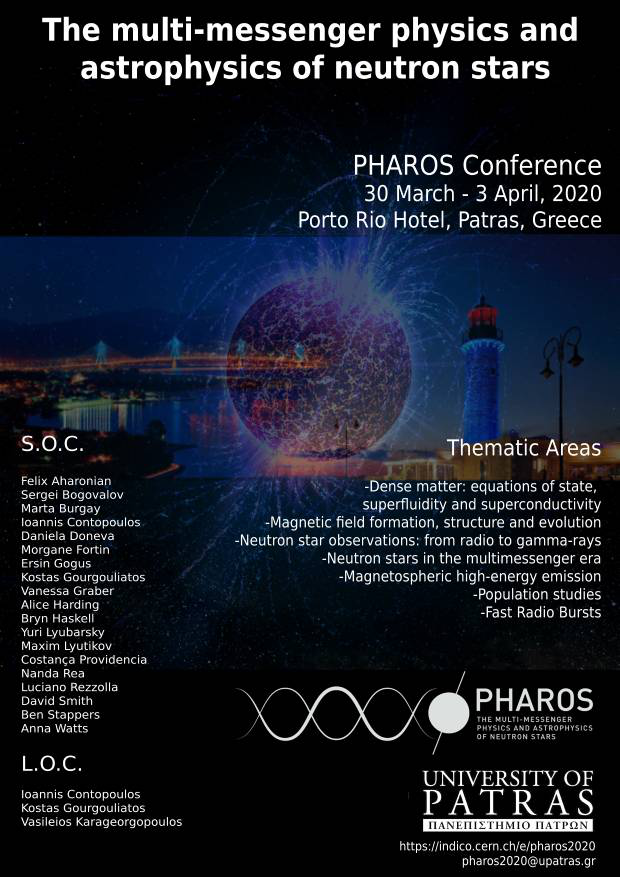Speaker
Description
The partially screened vacuum gap (PSG) in the inner acceleration region, a variant of the pure vacuum gap model, has been developed to account for the observed thermal X-ray emission from the polar cap as well as subpulse drifting timescales in normal radio pulsars. We have used this model to explain the presence of death lines in pulsar population and in particular understand the location of PSR J2144–3933 at extreme edge of the P − ˙P diagram. The basic features of the PSG model entail that the polar cap is maintained close to a critical temperature and non-dipolar surface magnetic field is present to form the inner acceleration region. The vacuum gap models produce sparks and in the PSG model the thermostatic regulation near the critical temperature is maintained by these constant sparking discharges.We demonstrate that the non-dipolar surface magnetic field reduces the polar cap area in PSR J2144–3933, such that only one spark can be produced and sustain the critical temperature of the PSG. The pulsar has a single component profile over a wide frequency range. Single pulse polarimetric observations and the rotating vector model confirm the observer’s line of sight to traverse the emission beam centrally. These observations are consistent with a single spark operating within the framework of the PSG model, where the spark associated plasma results in single component emission. Additionally, the single pulse modulations of this pulsar, including lack of subpulse drifting, presence of single period nulls and microstructure property are compatible with a single spark either in PSG or in general vacuum gap model.

